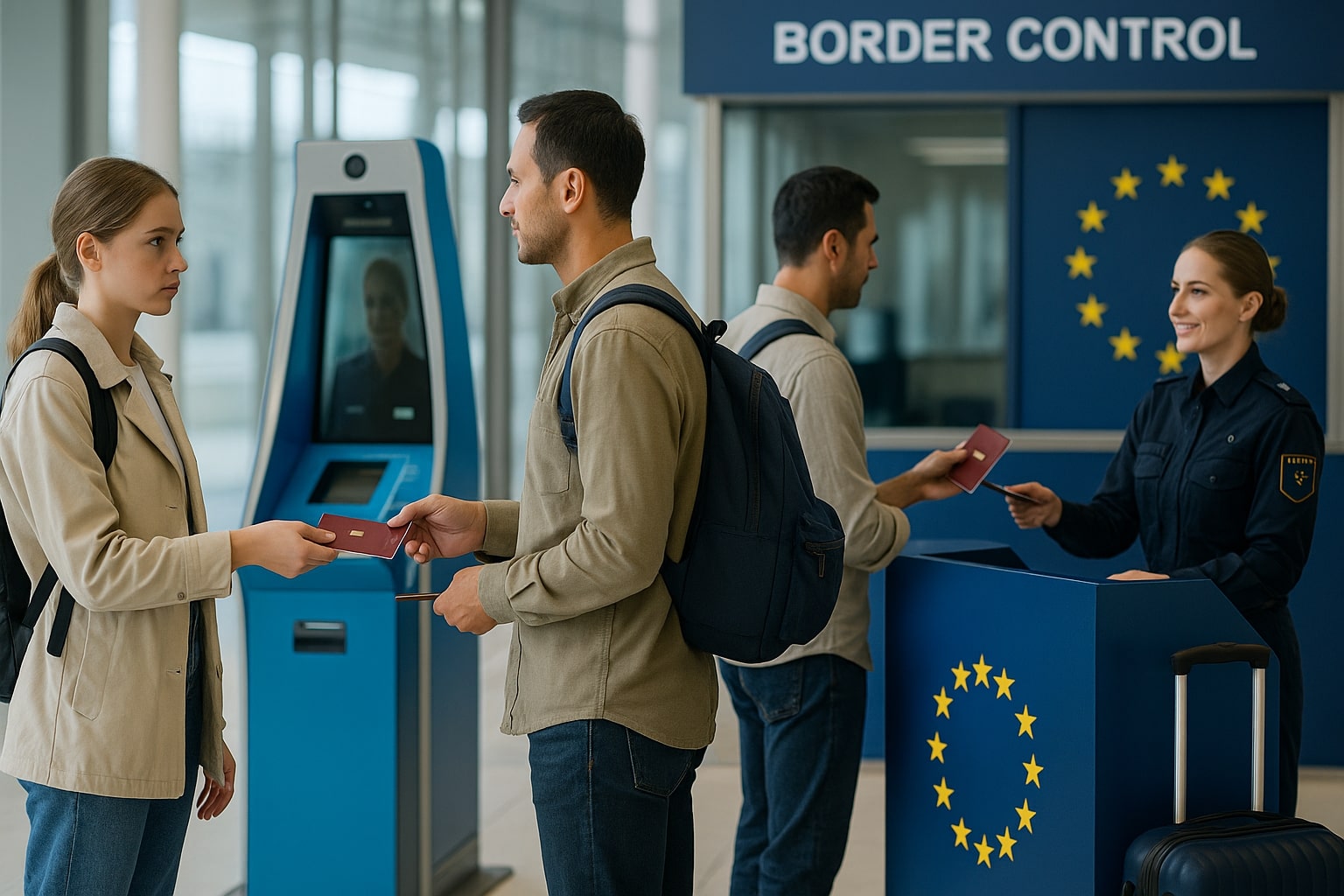Why British Travellers Must Prepare for EU Border Changes
A new campaign to prepare British travellers for EU border changes has been launched by the UK government, reminding citizens that travel to Europe will soon look very different. Starting in 2025, those heading from the UK to EU countries will face stricter border procedures, including new biometric checks and advance travel authorisations.
For millions of holidaymakers, students, and business travellers, these adjustments mean more planning, more paperwork, and potentially longer waits at the border. This blog breaks down what the EU border changes 2025 mean for British travellers, how the UK’s campaign is helping, and the steps you should take to ensure stress-free journeys.
Why the EU Border is Changing in 2025
After Brexit, the UK became a “third country” under EU law. This means that UK passport holders no longer enjoy automatic free movement. To tighten border security and modernise entry systems, the EU is rolling out two major changes in 2025:
- Entry/Exit System (EES):
Every British traveller will have their fingerprints and a facial image captured at their first entry into the EU. This will replace the old passport stamping system. - European Travel Information and Authorisation System (ETIAS):
From 2025, British travellers must apply online for ETIAS before entering the Schengen Zone. This is similar to the U.S. ESTA system and is valid for three years.
Together, these reforms form the Schengen border changes designed to strengthen security while streamlining future travel.
The UK’s New Campaign Explained
Recognising the potential confusion, the government’s UK travel campaign aims to:
- Inform travellers about upcoming EU entry rules.
- Provide step-by-step guidance for securing ETIAS approvals.
- Highlight the importance of valid passports and travel insurance.
- Reduce bottlenecks at ports, airports, and Eurotunnel crossings.
The campaign uses social media, official websites, and travel industry partnerships to spread awareness before the rules take effect.
What British Travellers Need to Know
1. EU Entry Rules 2025
- A valid UK passport with at least three months’ validity beyond your trip is required.
- Passports must be less than 10 years old on the day of travel.
- Travellers will need ETIAS approval for short stays (up to 90 days).
2. Biometric Checks EU
At your first Schengen entry point, you’ll undergo fingerprinting and facial recognition. While this might cause queues initially, the system is designed to reduce repeated checks in future visits.
3. ETIAS Requirements
- Cost: €7 for travellers aged 18–70.
- Application: completed online in minutes.
- Approval: usually automatic, but allow up to 96 hours.
- Validity: three years or until passport expiry.
4. Longer Waits at Borders
Travellers using ferries and Eurotunnel may experience longer checks in 2025 as infrastructure adapts. Planning extra time for journeys is strongly recommended.
How EU Border Changes 2025 Affect Different Travellers
- Holidaymakers: More admin before short breaks. Ensure ETIAS is secured before booking.
- Students: Those studying in Europe must plan for extra checks when returning home for holidays.
- Business travellers: Multiple EU trips mean biometric data will speed up future entries, but first visits may take longer.
- Families: Parents should apply for ETIAS for children too, even though under-18s don’t pay fees.
Why Preparation is Key
The government stresses that failure to comply with UK to EU travel rules could result in delays or even denied boarding. That’s why the new campaign to prepare British travellers for EU border changes is focused on education before enforcement begins.
Practical steps to prepare include:
- Checking your passport’s expiry date.
- Applying for ETIAS at least a week before travel.
- Allowing extra time at ports and airports.
- Carrying proof of accommodation and funds, as border officers may request them.
Impact on Immigration and Mobility
From an immigration perspective, these EU border crossing 2025 reforms highlight the growing importance of digital systems in global mobility. Just as the UK introduced its own ETA for non-visa nationals, the EU’s ETIAS mirrors a worldwide trend toward pre-screening travellers for security.
For British nationals, the shift represents the most significant travel change since Brexit—requiring more personal responsibility but promising smoother journeys once systems settle.
Common Questions About EU Border Changes 2025
Q: Will UK citizens need a visa to travel to the EU?
A: No, ETIAS is not a visa. It is a travel authorisation, valid for short trips up to 90 days.
Q: How will students be affected?
A: Students will need ETIAS for leisure travel, but long-term study visas for EU countries remain separate.
Q: Will queues at Dover and Eurotunnel increase?
A: Initially yes, but once biometric data is recorded, repeat travellers should face faster entry.
Q: Do children need ETIAS?
A: Yes, but under-18s and over-70s are exempt from paying the €7 fee.
Conclusion: Be Ready for a New Travel Era
The new campaign to prepare British travellers for EU border changes is timely. With biometric checks, ETIAS requirements, and stricter EU entry rules, journeys to Europe in 2025 will feel very different from the past.
But with awareness, preparation, and a little patience, British travellers can adapt smoothly. Whether you’re heading for a weekend in Paris, a semester in Spain, or a business meeting in Berlin, planning ahead will ensure your trip isn’t disrupted by the Schengen border changes.
Contact Worldwide Immigration Ltd
For expert advice on navigating the UK and EU’s evolving immigration landscape, contact us today:
Arena Business Centre, Abbey House, 282 Farnborough Road, Farnborough, GU14 7NA
020 3488 2308
WhatsApp: +44 7360 271841
inquiry@worldwideimmigration.co.uk
worldwideimmigration.co.uk


